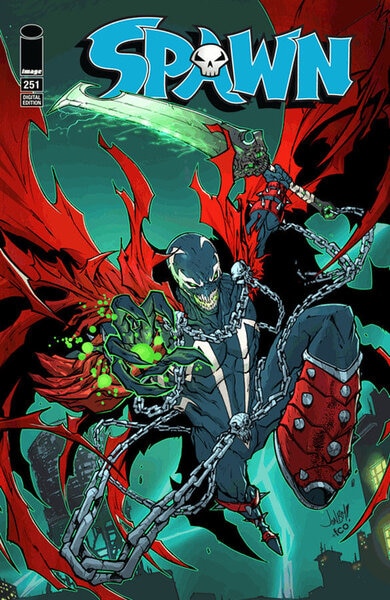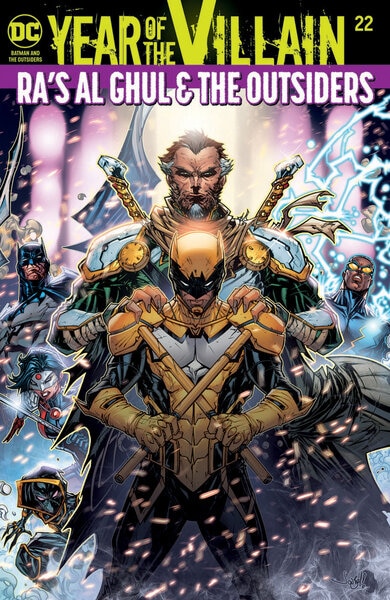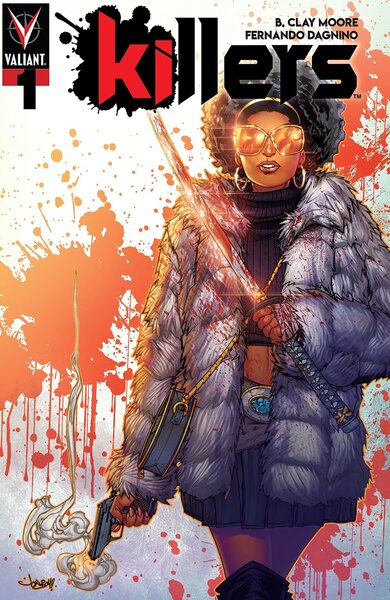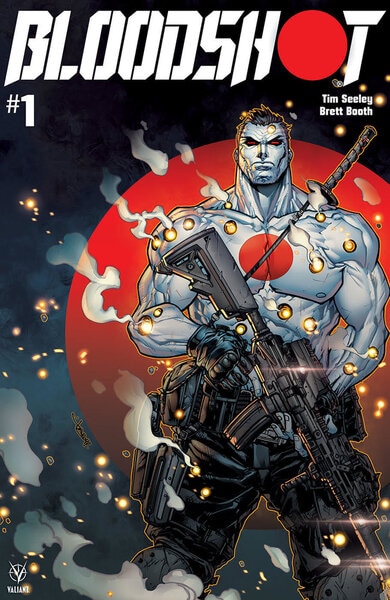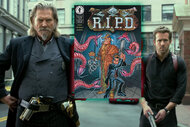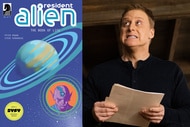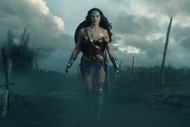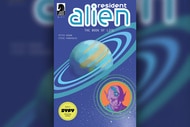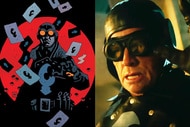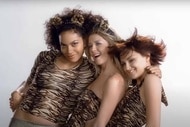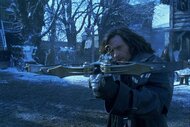Create a free profile to get unlimited access to exclusive videos, sweepstakes, and more!
Indie Comics Spotlight: Jonboy Meyers on his legendary Spawn run, Dragonslaying, and why Satan is a cat
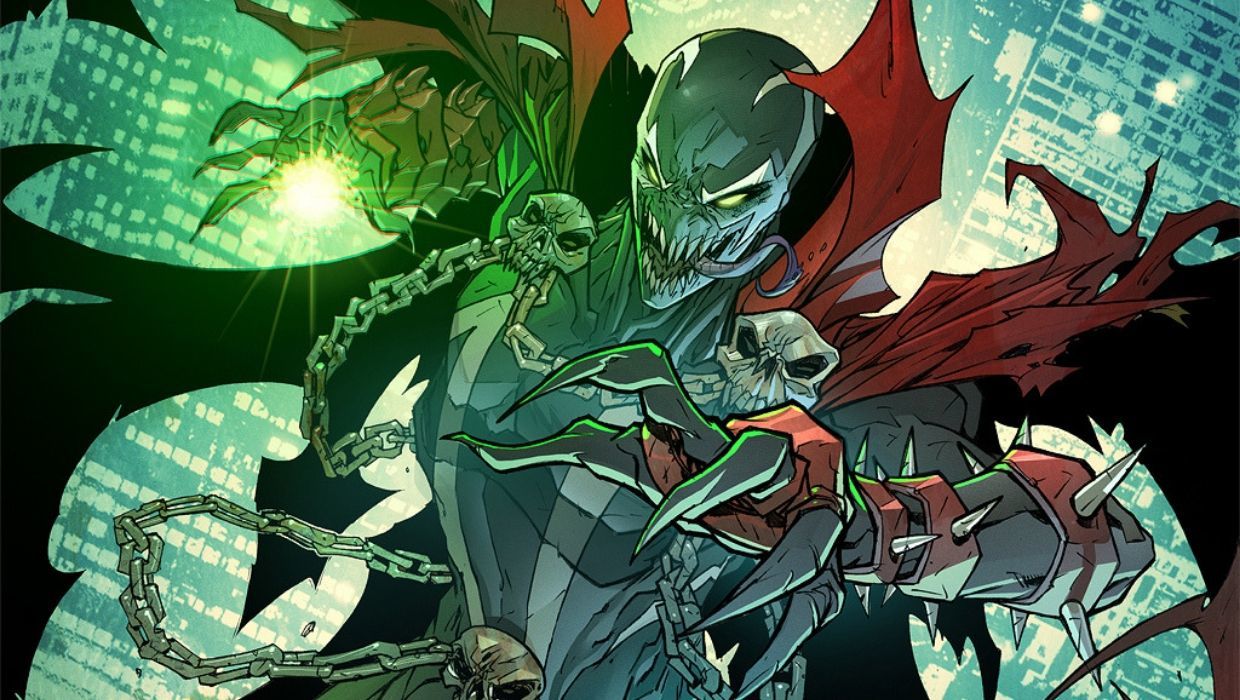
Jonboy Meyers read his very first comic on a military base. An Army brat with a military policeman father, his family moved around a lot before settling at Fort Carson, in Colorado Springs. Now and then his dad had to lock up drunk soldiers before they could cause any trouble. He usually just let the men dry out in the stockade overnight with some water and a few comic books to keep them from getting bored. The drunk soldiers' loss was Meyers' gain, because his dad always brought a stack of those comics home for him to read.
He was hooked from the start.
Meyers, who describes himself as shy and "pudgy" before high school, found a safe space in between the pages of comics and his boxes of Transformers and G.I. Joe action figures. Meyers never dreamed he'd grow up to draw some of the characters he was reading and playing with every day.
Meyers has worked as a cover artist for The Walking Dead's Robert Kirkman, a designer for Blizzard Entertainment and Riot games, and even had a stint as a marketing director before landing a Spider-Man title under Joe Quesada and C.B. Cebulski. A chance meeting with Todd McFarlane at San Diego Comic-Con led to him drawing one of the most legendary Spawn arcs of the series. He went on to draw at both DC and Marvel before coming back to the indie side, where he now has several covers with Valiant and his creator-owned comic dropping soon.
SYFY WIRE spoke with Meyers about what it was like working for his hero, what made him leave DC in the middle of a Teen Titans run, and why Satan is a cat.
Since you lived all over the world as a kid, did you learn to speak multiple languages?
No, no. Actually, my mom's from Vietnam, and she just wanted us to fit in because she was severely discriminated against here because of attitudes towards the [Vietnam] war. She used to get spit on and stuff.
Wow. That's terrible.
Yeah. People didn't understand that her family was on the side that fought for the U.S. So when she had all of us, she just wanted us to kind of fit in. She didn't want to teach us anything but English.
What comic book artists did you admire as a kid?
Alex Toth’s stuff was pretty mind-blowing, and of course Bruce Timm, who did all the designs on Justice League. I just loved the economy of line. In the '90s I really started getting serious about drawing, and that's when I discovered manga and anime. This was also when Jim Lee and Todd McFarlane and all these guys were coming out.
Any guy who had an anime flair to his work, I gravitated to. Michael Golden, Arthur Adams, Scott Campbell, Joe Madureira, and Jason Pearson all imprinted on me so much. You can still see a lot of their art DNA, even though now my tastes are a little bit more diverse.
What's it been like transitioning from ink to digital in your work?
There's a big market now for just working entirely digitally. I'm an older guy, so I like having the original art to sell or to look at and admire. A lot of my Royals pages for Marvel were done digitally just because of deadline issues. But I noticed I worked a lot faster, and there's a lot of shortcuts that you can do with brushes in apps like Clip Studio Paint. It's all about speed. I long for the olden days where we had five weeks an issue and I could pencil something traditional.
Did you used to have five weeks to do 22 pages?
Twenty-four pages plus cover. Nowadays, they don't let interior artists do covers. So there's this whole submarket now for just doing Cover Work for Publishers, which I'm a part of, and I'm thankful for that. But now I do covers and work on my stuff. I don't do a lot of interiors for corporate comics.
What was your first published comic?
My first published stuff I did with Robert Kirkman's Funkotron. I did a book called Double Take and another called Ink PunkS. Back in the day, I knew Kirkman before Kirkman became "ultimate Kirkman."
Before he reached this final form?
Yes! Honestly, Robert is the same now as he was back then. Same kooky sense of humor, same clothes. So I don't think fame has really changed him too much. Well, now he has a much nicer house.
Did you work on Masters of the Universe after that?
Yes. A buddy of mine created a combo company called MV Creations, and they got the license to do all of the He-Man and Masters of the Universe stuff. Then they asked me to be their marketing director. I had no idea what I was doing. I was drawing, landing new books, doing press releases, trying to push our books with retailers, and just trying to keep the lights on.
You really blew up when you brought Al Simons back in Spawn #251. What was it like working with Todd McFarlane?
Just before I left Riot Games, I decided that I wanted and I met Todd McFarlane at San Diego Comic-Con. We had a nice little 15-minute conversation and I gave him my sketchbook. And then like a week later he hired me to do Spawn. The whole thing was as crazy as it sounds.
You also changed Spawn's suit and his mask — did McFarlane have any issues with that?
Todd was like, "Have fun with this. Make this your own." We brought in Paul Jenkins as a writer and we came up with something really unique. It was important for me as it's an artist, that many people understand that Al is a Black man, after [Spawn: Resurrection] the Jim Downing character was in a coma. In our run the main goal was to bring Al Simmons into the forefront. He's this good-looking African-American guy who can kick your butt.
With a talking puppy who happens to be God.
Yes! There's this really cool backstory we had about Satan, who was supposed to be a cat and was based on the cat that would follow Spawn around in the early issues. So we were going to have this be a confrontation between God and Satan. Or dog versus cat. But, sadly, that never happened.
You didn't do that many interiors after Spawn, right?
Yes, after Spawn I moved to DC Comics and did the Teen Titans Rebirth for them, then Royals at Marvel, which, looking back, Todd, [if you read this] I have to say, you were totally right.
Did he warn you not to go?
Todd was like my dad in comics, and he said to me, "Look, I'm going to tell you what to do and what not to do, but you're probably going to do the exact opposite because you're young and you're dumb." And he was right. I went over to DC and I launched a Teen Titans Rebirth book, and I did all the designs for that, and I did the majority of the covers for that initial arc, as well as interiors for the Rebirth One shot and Issue One. I also wrote the plot, which ended up getting changed up a bit by DC Editorial and the Teen Titans Writer. I understand branding, but I still thought it was a bit disappointing ... but it’s corporate comics, and I do totally understand that they have their ideas about what they want to see. So I worked on two issues of that and decided to leave. After that, I went to Marvel and it was even worse.
Do you think that the freedom of working at Image spoiled you for the Big 2?
It wasn't that it spoiled me. I think Todd [works with talent] differently. If you buy an expensive car, you let that car do what it does. You let it run fast. You just define the track for it. A lot of companies, they showcase their cars but don't really drive them much. I believe in a team environment. I like to talk to my writers and my editors, I like all of us talking and all of us coming up with something together and having ideas. If the writer has a say in the art, I should have a say in the script.
You have a very distinctive color style. Do you color your own work?
I flat everything, then I swatch it all out and come up with my colors. But I have a friend named Ryan Conair who actually helps me out with color. But this way it's already kind of like laid out like a roadmap for him. Kudos to Ryan.
You're doing a lot of work for Valiant now as well. Bloodshot, Killers, and now a Psi-Lords cover.
Yes, I just finished the last cover for #5. And working with Fred Van Lente on Psi-Lords was great.
Princess Dragon Killer is the creator-owned project that you kickstarted, right?
Yes, I Kickstarted the sketchbook that funded a large part of it. The goal was to use that money as income and for printing so I wouldn't have to take on all more covers to make ends meet. I can just concentrate on my book. It's so great that you can be able to focus on creating your own content.
What is the premise of Princess Dragon Killer?
She's the last Elven princess and she takes up her father's sword and swears to kill every last dragon who slaughtered her people. But it's not going to be your traditional fantasy book. So when you look at it, it's not exactly your knights, armor, roundtable, and all that. When you see it you'll think, "Oh, wow, this is something different." I want to turn the genre on its head. Where she starts is not where she ends up, and it's essential to me for characters to have an arc. Plus I get to write this one too, and I'm really excited about that.
